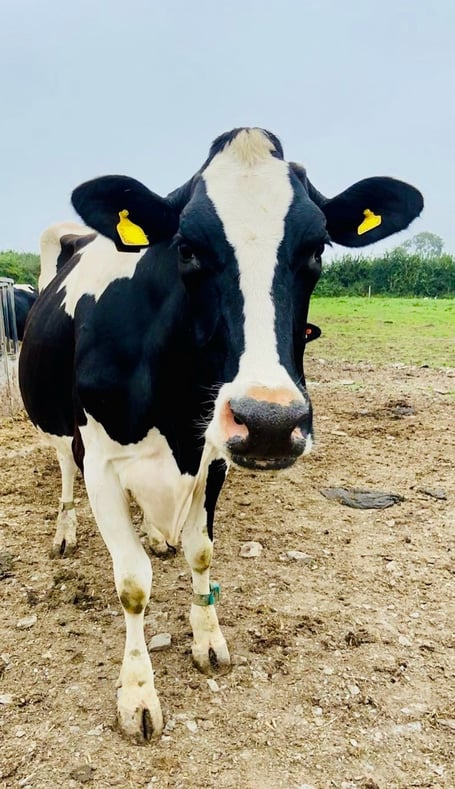Stuck in holiday traffic, I had plenty of time to think about my next call. Dairy cow, bloated, not well at all. This didn’t sound good. In an adult dairy cow bloat is not always treatable, especially if they are lethargic. Bloat typically affects the rumen, stomach #1, which anatomically makes up the entire left side of a cow’s abdomen. I thought about whether she might have eaten too much grain or whether her guts were paralysed? Would I get away with passing a stomach tube or might I have to place a ‘Red Devil’ canula?
On arrival the cow was reluctant to stand and had a distinct bulge on the right side. Not a normal bloat then, scrap all my previous thoughts. Stomach #4, the abomasum, sits on the right side of the abdomen. Whilst the rumen is a great big fermenting vat, the abomasum is a ruminants’ acid stomach, more akin to a human stomach. It should be much smaller than the rumen, sitting low down on the right of the cow. Placing my stethoscope on her right flank and flicking her abdomen with my finger I heard the ‘bouncing basketball’ sound of an abomasum in distress. The diagnosis is a Right Displaced Abomasum, less common but more serious than the Left Displacement when it gets stuck the wrong side of the rumen. Surgery is the only treatment and it needed to be now; the twist disrupts the blood supply to the stomach and can quickly become fatal.
Rooting around in my car I managed to find my faithful and well-thumbed book of bovine surgery. I hadn’t done one of these surgeries for a few years and a 2-minute refresher on which way to untwist them allowed me to keep up the appearance of someone who knows what they are doing! It is one of the wonders of the world for me that you can perform major abdominal surgery on a cow with just some local anaesthetic to prevent them feeling any pain.
This cow was a star patient, seemingly unconcerned that she was part-way through open abdominal surgery. The problem was easy to find, a space-hopper sized sphere of abomasum. No wonder the cow felt rough, normally it is more the size and shape of a rugby ball! Remembering the diagram in my book I spent a bit of time figuring out which bit of space-hopper abomasum I could safely hold and gave it a firm push. At first not much happened and then it all happened at once, spinning satisfyingly back into place. I stitched the pyloric part of the abomasum to the flank so it wouldn’t twist again and closed the muscles and skin. The job was done, we gave some pain relief and pumped her rumen with 20 litres of energy drink.
In the absence of a sterile operating theatre, anaesthesia and a nursing team on hand throughout the procedure, you always need a bit of luck on your side with farm surgery. I am pleased to report that two weeks later the cow is doing well.





Comments
This article has no comments yet. Be the first to leave a comment.